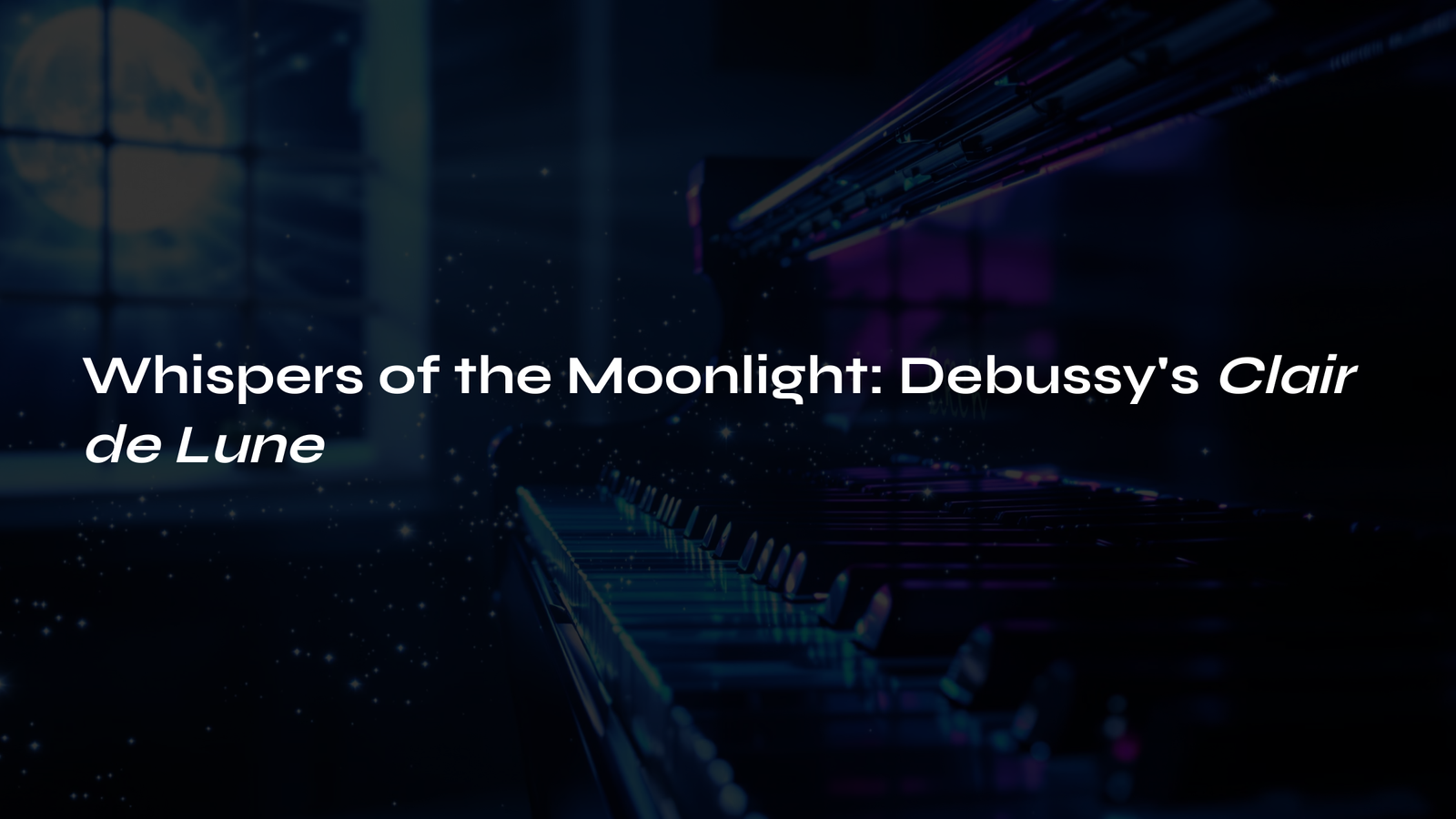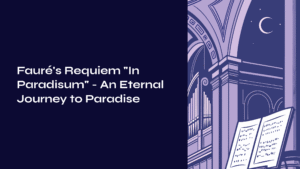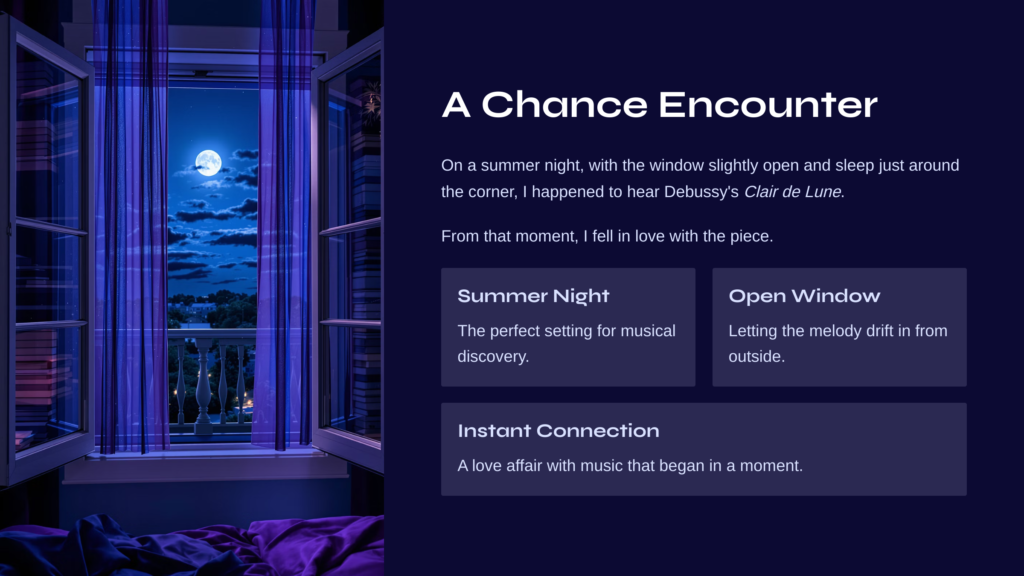
On a summer night, with the window slightly open and sleep just around the corner, I happened to hear Debussy’s Clair de Lune. From that moment, I fell in love with the piece.
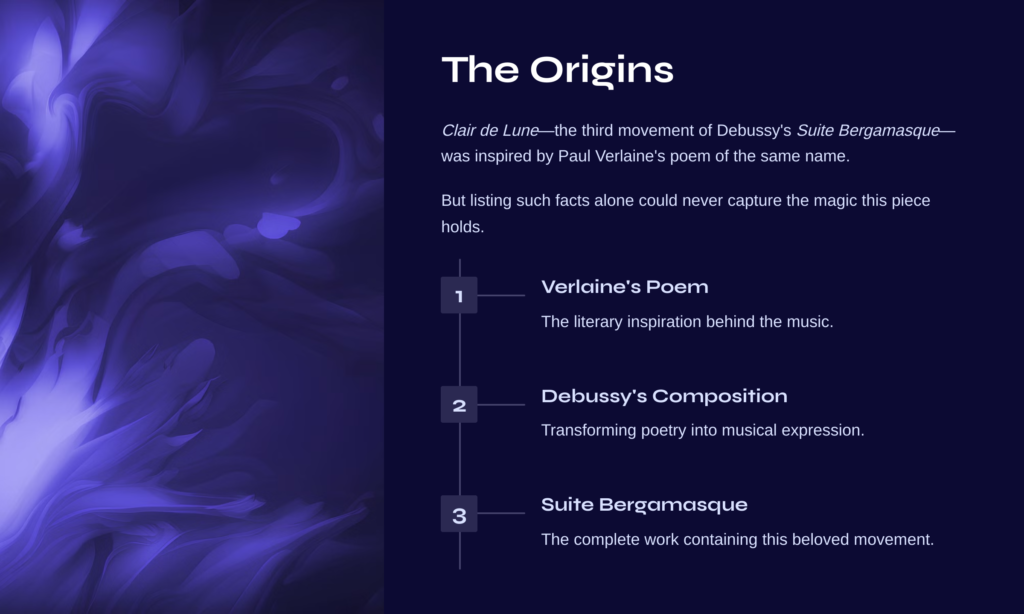
Clair de Lune—the third movement of Debussy’s Suite Bergamasque—was inspired by Paul Verlaine’s poem of the same name. But listing such facts alone could never capture the magic this piece holds.
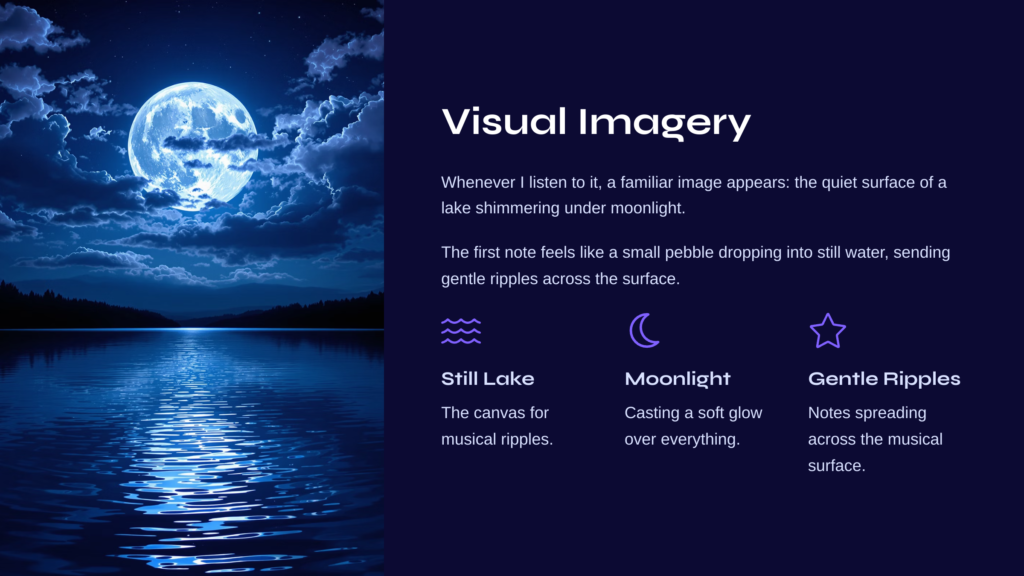
Whenever I listen to it, a familiar image always appears in my mind:
the quiet surface of a lake shimmering under the moonlight.
The first note feels like a small pebble dropping into still water, sending gentle ripples across the surface. As the harmony gradually brightens, it’s as if a full moon slowly emerges from behind drifting clouds, casting a soft glow over everything.

My favorite moment comes midway through the piece—when the notes cascade like a waterfall. Every time, I feel my heart swell and race with the music. Then, just as suddenly, the waves of emotion recede, leaving behind a calm, meditative serenity—like the peaceful stillness after a passing storm.
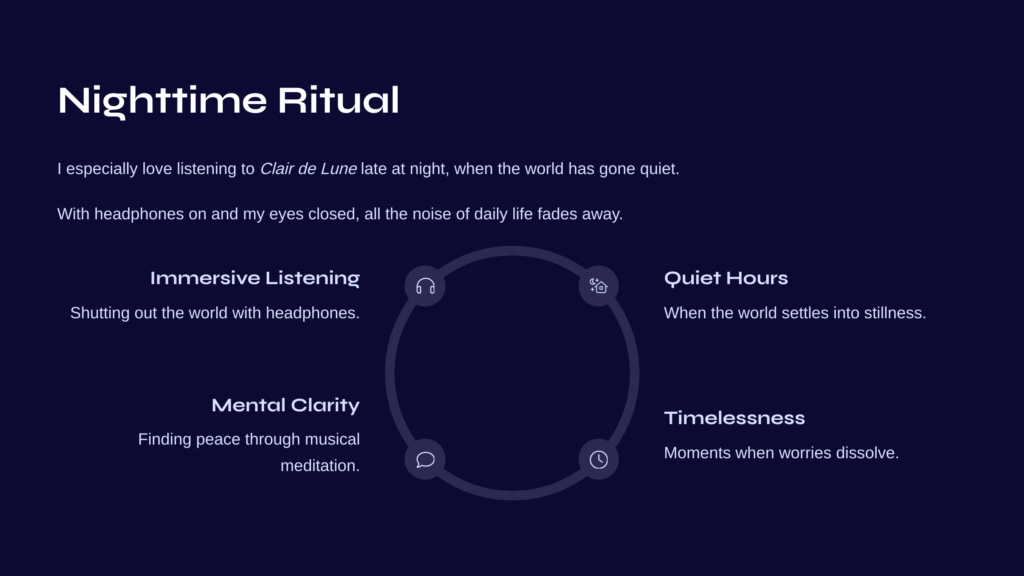
I especially love listening to Clair de Lune late at night, when the world has gone quiet. With headphones on and my eyes closed, all the noise of daily life fades away, leaving only Debussy’s moonlight flowing through my mind. In those moments, time seems to pause, and every worry simply dissolves.
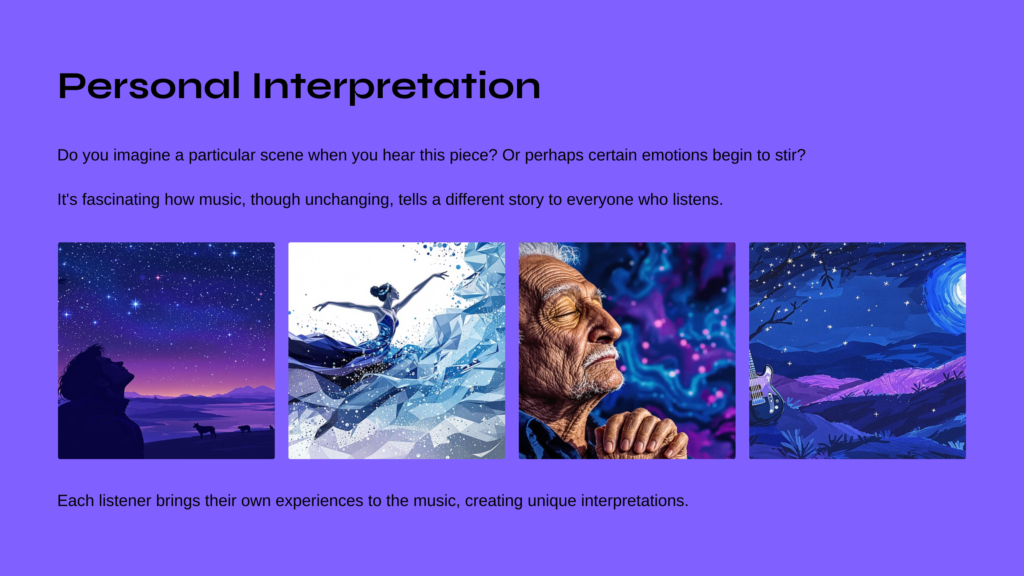
Do you imagine a particular scene when you hear this piece?
Or perhaps certain emotions begin to stir?
It’s fascinating how music, though unchanging, tells a different story to everyone who listens.
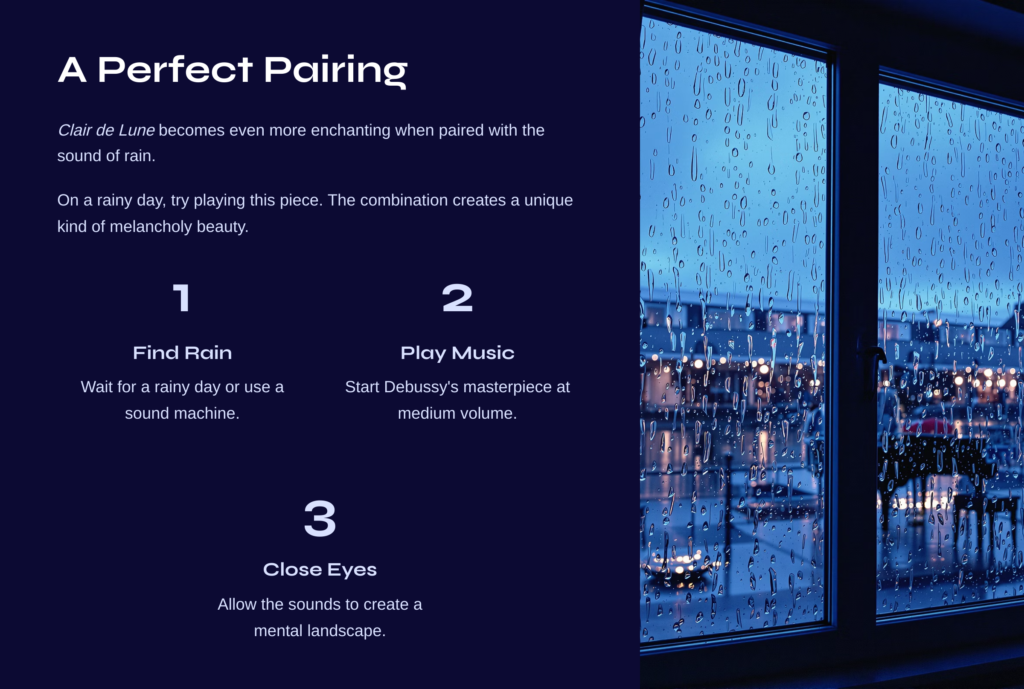
Oh, and here’s a little tip—
Clair de Lune becomes even more enchanting when paired with the sound of rain.
On a rainy day, try playing this piece.
The unexpected combination of rain and moonlight creates a unique kind of melancholy beauty—
a quiet conversation between two opposing worlds.
